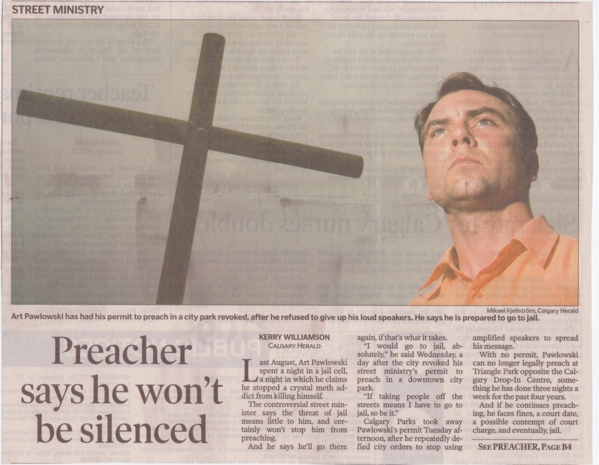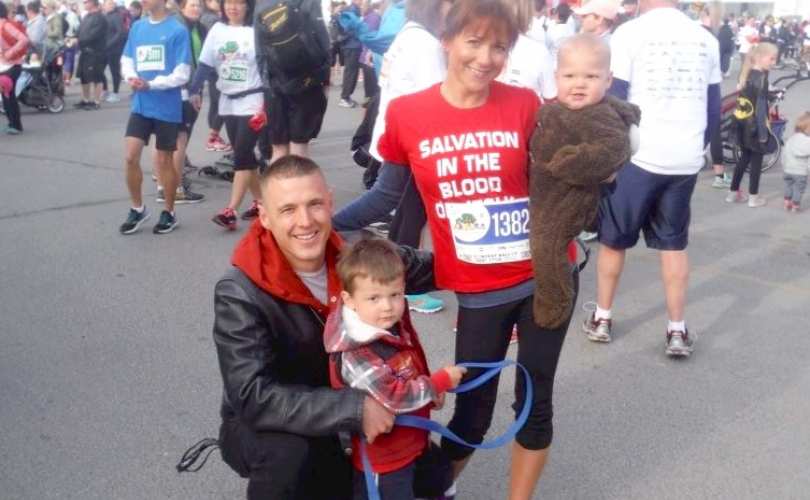Just what was Ric McIver’s campaign thinking by having him attend March for Jesus parade, again?
This morning I read with interest the ample coverage of Ric McIver’s sojourn into the abyss of social conservatism. After my initial reaction – ‘Yikes!’ – faded, I could only shake my head in amazement while muttering “when will they ever learn…” as I meandered to the kitchen for a second cup of coffee.
My bemusement is based on my observations of many conservatives over the years and on my reading of the data collected by my students working in the Citizen Society Research Lab at Lethbridge College (and other sources) that clearly indicate Albertans are increasingly progressive in their thinking when it comes to issues of individual choice, inclusion and acceptance.
Hence, one would think that McIver should have understood how the vast majority of those increasingly progressive Albertans would likely evaluate his participation in and support for the Calgary March for Jesus event held over the weekend.
Because Rob Breakenridge, Graham Thomson and Don Braid, among others, have done a fine job of describing the situation and providing context, I won’t repeat that here.
Suffice it to say that Albertans are continuing their own march towards entrenching a more progressive than socially conservative or traditional political culture in this province. At least when one considers some of the most significant ‘hot button’ topics in contemporary political (abortion choice, capital punishment, medical marijuana, doctor assisted suicide, same-sex marriage, and recreational marijuana).
In our Traditional or Progressive? Albertans’ Opinions on Six Policy Issues, we found that, by a four to one margin (79.7%) Albertans strongly support abortion choice remaining a private matter. Albertans also strongly support marijuana remaining legal for medical purposes (76.9%). Support has remained relatively consistent on both these issues for the past five years.
Alberta Issues Single Bar Chart Graphic
A majority of Albertans continue to support reinstating capital punishment for first degree murder (61.9%), making this the only issue of the six where Albertans are more traditional than progressive in their thinking. Support has remained relatively consistent at this level for the past five years.
On the more progressive side, Albertans strongly support legalized doctor-assisted suicide (78.8%) and strongly support same-sex marriages having legal status with traditional marriages (77.3%). Support has increased from approximately 65% in 2009 on both these issues.
And for the first time, a slim majority of Albertans support decriminalizing marijuana for recreational purposes (50.1%). Support has grown from only 36.5% in 2009.
By way of summary, an index of opinion structure was created allowing for easier regional and demographic comparisons. The index scores range from a possible “0.0” for the most traditional Albertans, to “6.0” for the most progressive Albertans. The mean score for the province as a whole is 3.8, clearly on the progressive side of neutral (3.0) and steadily increasing from only 3.4 in 2009.
Alberta Traditional vs Progressive Single Bar Chart Graphic
On a regional basis, Calgary is consistently the most progressive area of the province, moving from 3.6 in 2009 to 3.9 in 2013. Edmonton and southern Alberta outside of Calgary rival for the next most progressive areas of the province, while the north outside of Edmonton remains the least progressive, but still more progressive than traditional.
The final graph demonstrates where various groups of Albertans place themselves on the traditional-progressive index continuum.
The graph is organized with supporters of the federal political parties at the top, followed by supporters of the provincial political parties, regions of the province, and the average Alberta score, all above the bar. A selection of various demographic groups is found below the bar.
Alberta Traditional vs Progressive Single Demographic Group Graphic
Normal patterns of opinion divergence are measured between demographic sub-groups. For example, and as expected, the very religious are the most traditional in their perspectives, followed by seniors, and Wildrose and federal Conservative voters. Alternatively, federal and provincial Liberal voters have leapfrogged their NDP compatriots to become Alberta’s most progressive sub-group, followed by federal Green voters, the non-religious, the higher educated, and upper income Albertans.
Now, while I don’t expect every politician to be intimately familiar with the results of any one study, even a casual observer with a cursory understanding of the overall political trends and the behavior of fellow politicians, parties and voters over the past couple of decades should be able to instinctively know that participating in an event like the Calgary March for Jesus would be potentially troublesome for an active, province-wide campaign.
Simply recalling how long and hard parties have had to work to overcome similar transgressions should have set off some alarm bells with the candidate’s mind or within his organization.
Maybe some reflecting on how hard Reform had to work to overcome the 1996 Brown-Ringma-Chatters “gays and ethnics to the back of the shop” episode is in order for the next McIver campaign strategy session. Or, a brief review of the damage done to the federal Conservatives’ 2004 election prospects by Randy White’s “to heck with the courts” comments. Or, if need be, something more recent like the “lake of fire” debacle Wildrose is still recovering from.
Simply put, if the McIver stunt was deliberate strategy, which it appears it was, his campaign should give itself a collective head-shake and take a long, hard look at what they are trying to achieve and the means by which they are going about getting the job done on behalf of their ‘bosses’.
If, on the other hand, the stunt simply wasn’t thought through… well, they should start thinking, before it is too late.
Either way, this is one episode that is going to haunt the McIver campaign for a very long time.


